In the multifaceted landscape of SaaS and tech, a one-size-fits-all marketing approach often falls short of resonating with diverse audiences. The technology sector is teeming with nuances, each industry niche having its own distinct challenges, language, and pain points.
This is where the concept of industry-specific landing pages comes to the forefront. A generic landing page might grasp the attention of some visitors, but an industry-specific landing page engages, speaks to, and resonates with the heart of a particular audience.
Whether a technology company specializes in software development, hardware manufacturing, or IT services, the need to address the unique demands of each industry is crucial.
Let’s jump into how you can achieve this specificity with your landing pages.
Understanding Industry-Specific Landing Pages
At the heart of industry-specific landing pages lies strategic content creation. The content presented on these pages is curated to align seamlessly with the interests and pain points of the target audience. This involves crafting compelling narratives that speak directly to the challenges faced by professionals within the industry.
By addressing these challenges head-on and positioning your company as a problem solver, the content resonates deeper, making visitors feel seen and understood.
Industry-specific landing pages serve as the perfect opportunity to showcase success stories and relevant results for targeted markets.
Through the strategic use of language, imagery, and case studies, the landing page becomes a testament to the company’s deep understanding of industry trends.
Additionally, it creates a track record that your SaaS business can deliver impactful solutions. By presenting relevant success stories and highlighting industry-specific accolades, the company bolsters its credibility and positions itself as a trusted partner for those seeking technological advancements within the sector.
Key Benefits of Industry-Specific SaaS Landing Pages
These tailored gateways offer a host of invaluable advantages, shaping user experiences, driving conversions, and amplifying brand identity in the ever-evolving tech landscape.
Personalized Content & Messaging
Industry-specific landing pages empower technology companies to deliver a highly personalized experience to their target audience. Visitors are greeted with content that resonates, capturing their attention and fostering a sense of belonging. This personal touch elevates user engagement, reducing bounce rates and encouraging prolonged interactions.
Addressing Specific Pain Points
Every industry has its own set of challenges and pain points. Industry-specific landing pages allow tech companies to pinpoint these issues and present tailored solutions. With generic pages that cater to everyone, you can’t create a personalized selling point for each type of business. By addressing pain points directly, you demonstrate an understanding of the industry’s struggles and position themselves as knowledgeable problem solvers. This approach not only engages visitors but also instills confidence that your company comprehends the nuances of the sector.
One of Insivia’s clients, Laketec, has targeted landing pages for the industries where they would get the most potential customers:
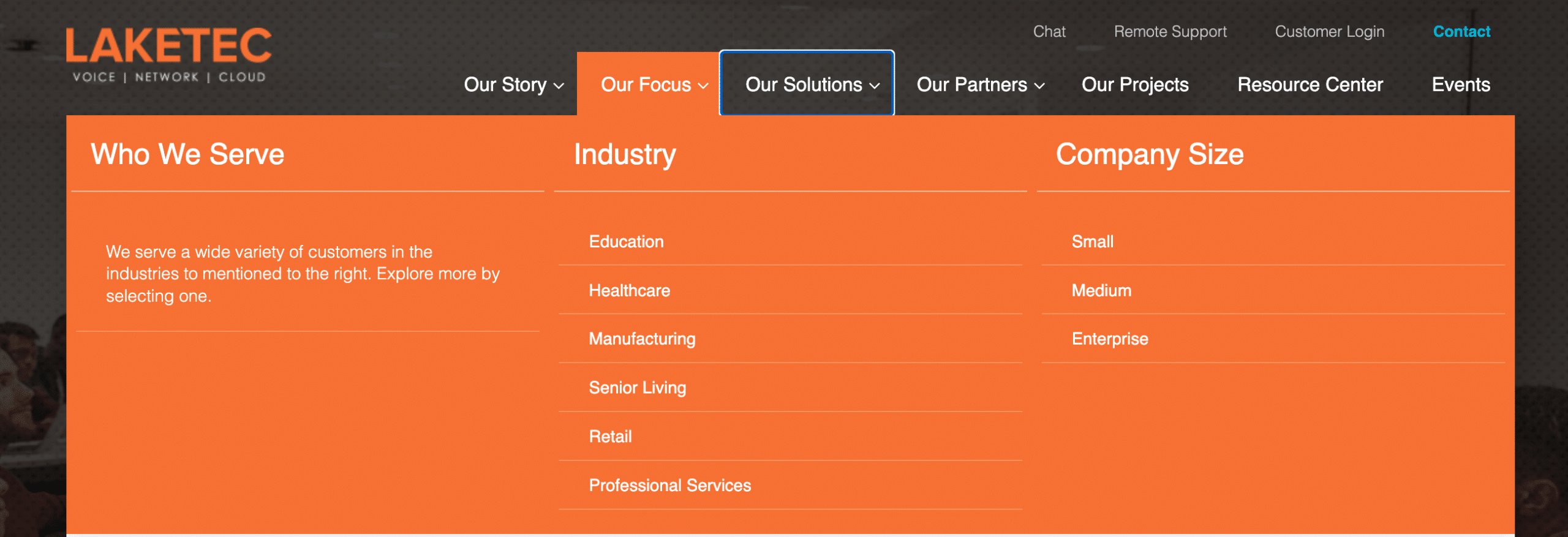
There’s validation also incorporated into the pages with customer testimonials that are relevant to the intended target market. This is useful as 37% of top landing pages include testimonials.
Improved Conversion Rates
Navigating the complexities of the tech world can be overwhelming for potential clients. Industry-specific landing pages provide a focused platform to present clear and compelling calls-to-action (CTAs). These CTAs guide visitors toward specific actions that align with their needs, such as downloading a relevant resource, requesting a demo, or exploring a solution.
Personalized CTAs convert 202% better than default versions. By simplifying the decision-making process, technology companies can drive conversions more effectively.
While this isn’t an industry-specific example, Monday.com provides a clear CTA where you can choose the features your organization needs the most:
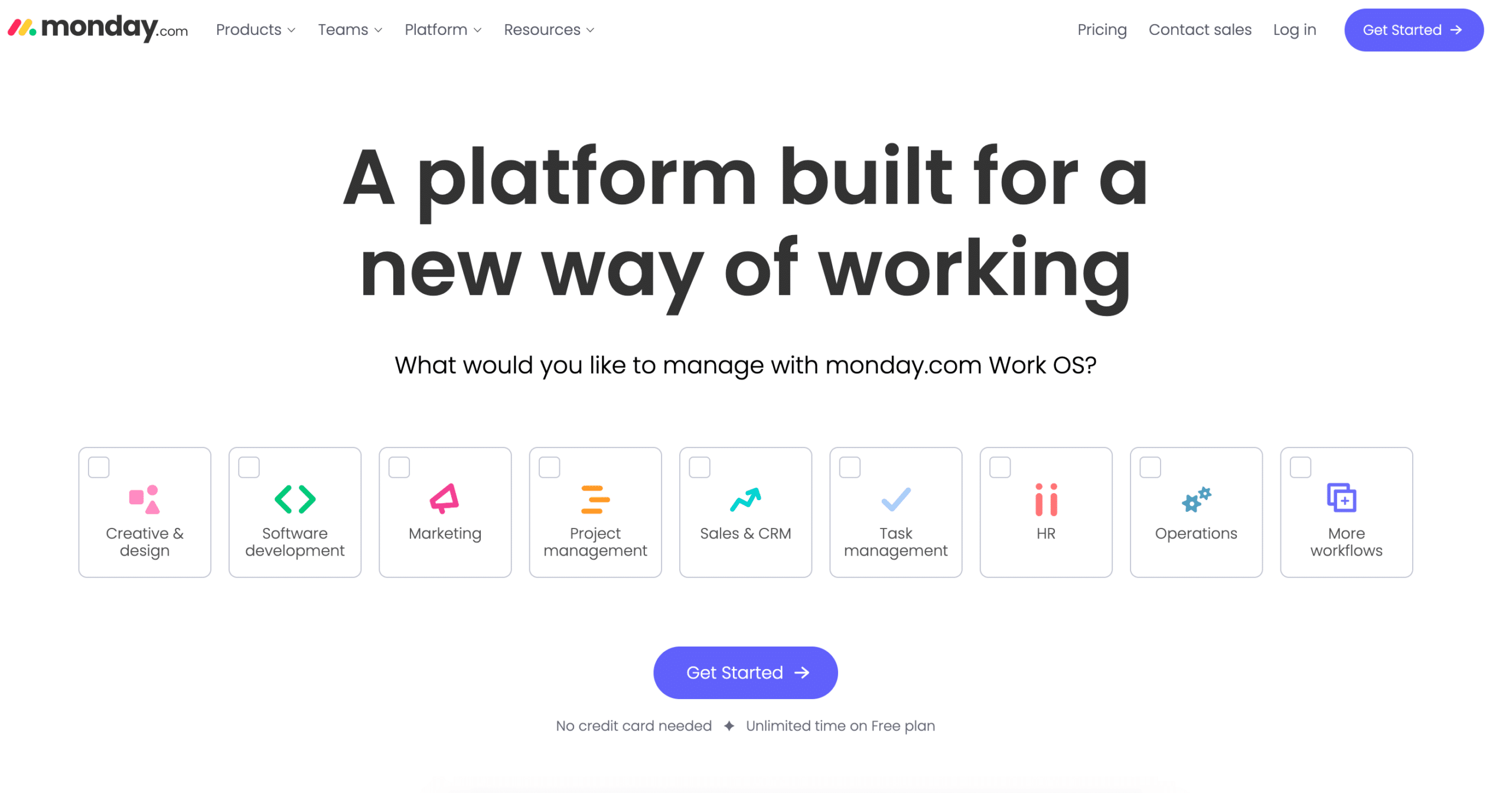
As you can see, there are a variety of approaches and styles you can experiment with to attract prospective customers.
Strengthened Brand Identity
Consistency with Industry Standards
An industry-specific landing page becomes a canvas for technology companies to showcase their alignment with industry norms and standards. From design aesthetics to the language used, these pages communicate a sense of familiarity and professionalism that resonates with industry professionals. Consistency with established industry practices helps reinforce your company’s image as a reliable and authentic player in the field.
Establishing Thought Leadership
By offering informative content, such as whitepapers, case studies, and expert analyses, tech companies position themselves as knowledgeable authorities. This elevates their brand identity and fosters a sense of respect within the industry.
Steps to Create Effective SaaS Landing Pages
Crafting industry-specific landing pages that resonate and convert requires a strategic approach rooted in meticulous planning and execution. Technology companies can navigate this journey successfully by adhering to a set of key steps that ensure their landing pages are optimized to capture the essence of their chosen industry.
Let’s explore the 8 essential steps to keep in mind for your landing page designs:
1. Understand Trends
Stay updated on the latest trends, innovations, and challenges that define your chosen niche. This knowledge will enable you to position your technology solutions as timely and relevant, catering to the current needs and aspirations of the industry.
One strategy is to stay competitive by listing your product features against other companies that are in your industry like our example:
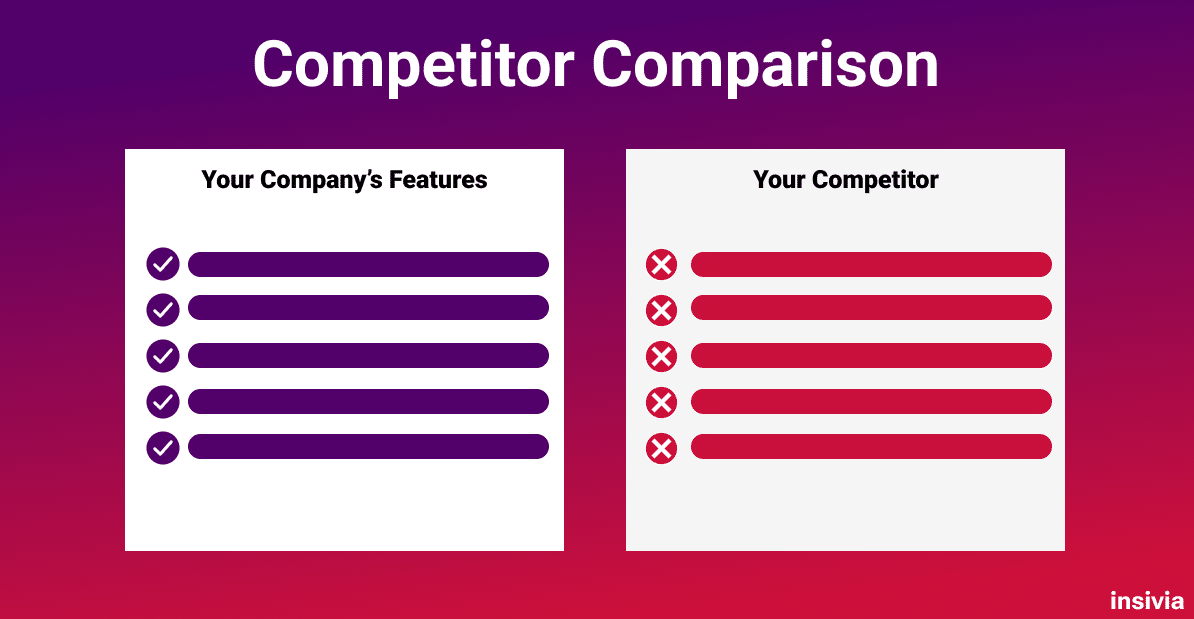
You can keep your competitor anonymous depending on your preference, but a side-by-side comparison can convince the visitor that you’re the right solution for their needs.
2. Identify Target Customer Segments
Segmentation is the cornerstone of effective marketing. Define and segment your target audience within the chosen industry. Understand their demographics, pain points, goals, and preferences. This granular insight will inform your content and design decisions, allowing you to create a landing page that speaks directly to the hearts and minds of your prospective clients.
Before you continue reading…
Insivia has created a Persona AI tool that streamlines the segmentation process…
Gain clear insight into potential customers you ideally want to target:
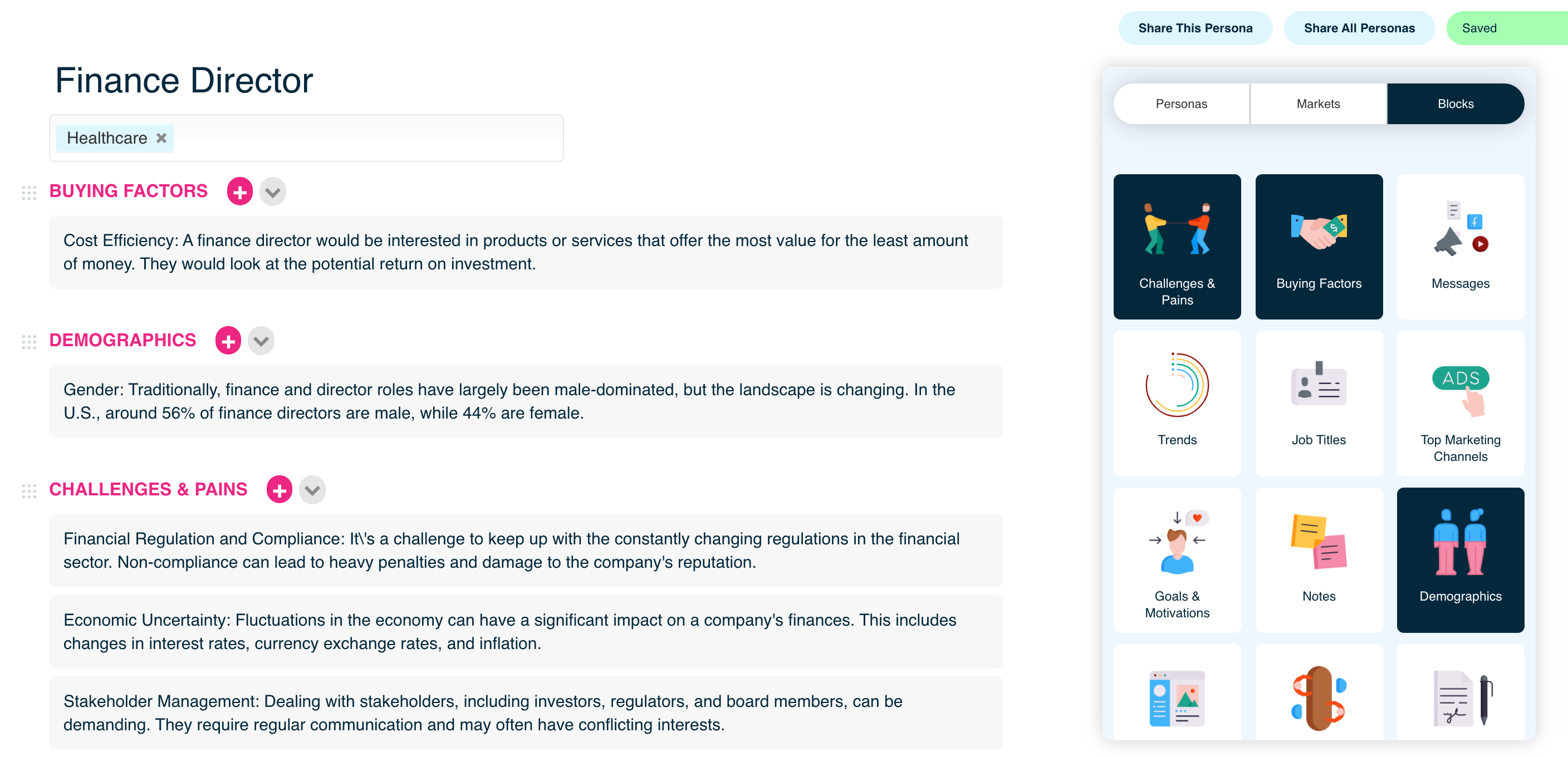 Build Personas Now
Build Personas Now
3. Highlight Tech Solutions Aligned with Industry Needs
Craft content that showcases how your technology solutions address the unique challenges faced by professionals in the industry. Present your offerings as solutions that alleviate pain points, streamline processes, and drive innovation. Utilize case studies and success stories to illustrate real-world applications and the positive impact your solutions have had.
You can also simply do this by including reputable logos of companies you’ve worked with. You can go big or small with this strategy. With Insivia’s homepage, we’ve included a large majority of clients that we’ve worked with:
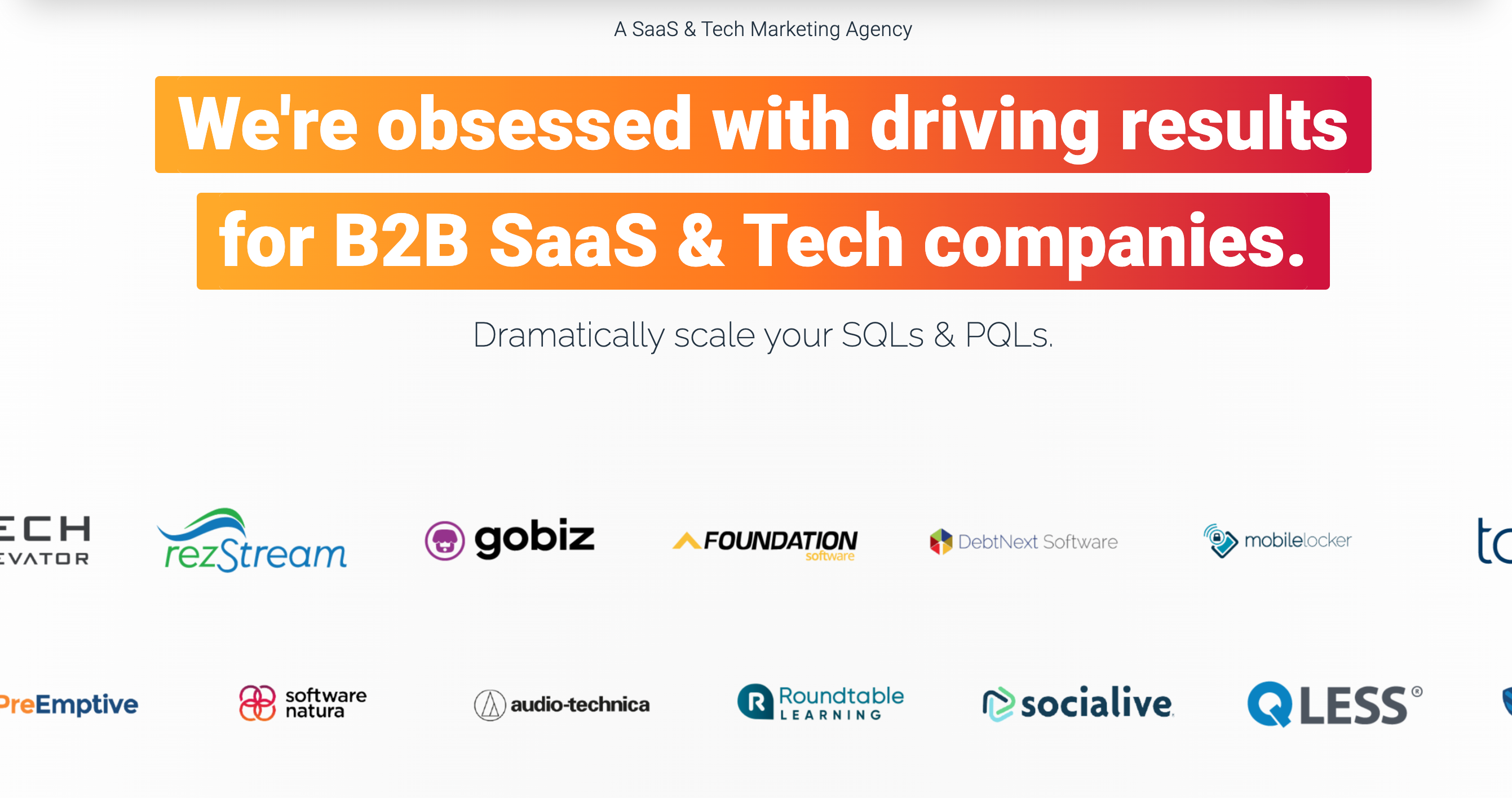
However, for industry-specific landing pages, you want to make sure the brands you mention coincide with that target market.
4. Avoiding Over-Technical Jargon
While showcasing technical expertise is essential, it’s crucial to strike a balance between demonstrating knowledge and overwhelming visitors with excessive jargon. The tech industry is rich with specialized terminology that might be unfamiliar to a broader audience. Strive for clarity and simplicity in your language, ensuring that even those with varying levels of technical expertise can comprehend your content. This approach widens your reach and prevents potential visitors from feeling alienated or discouraged by an onslaught of complex terms.
So, keep in mind who exactly you’re addressing with your landing pages, that will be your compass for how you phrase the content. Keep most of your text short and sweet. This is because 8 out of 10 people will read your headline, but only 2 out of 10 will read the rest.
For example, as many capabilities Salesforce has, they still maintain simple verbiage throughout their industry pages:
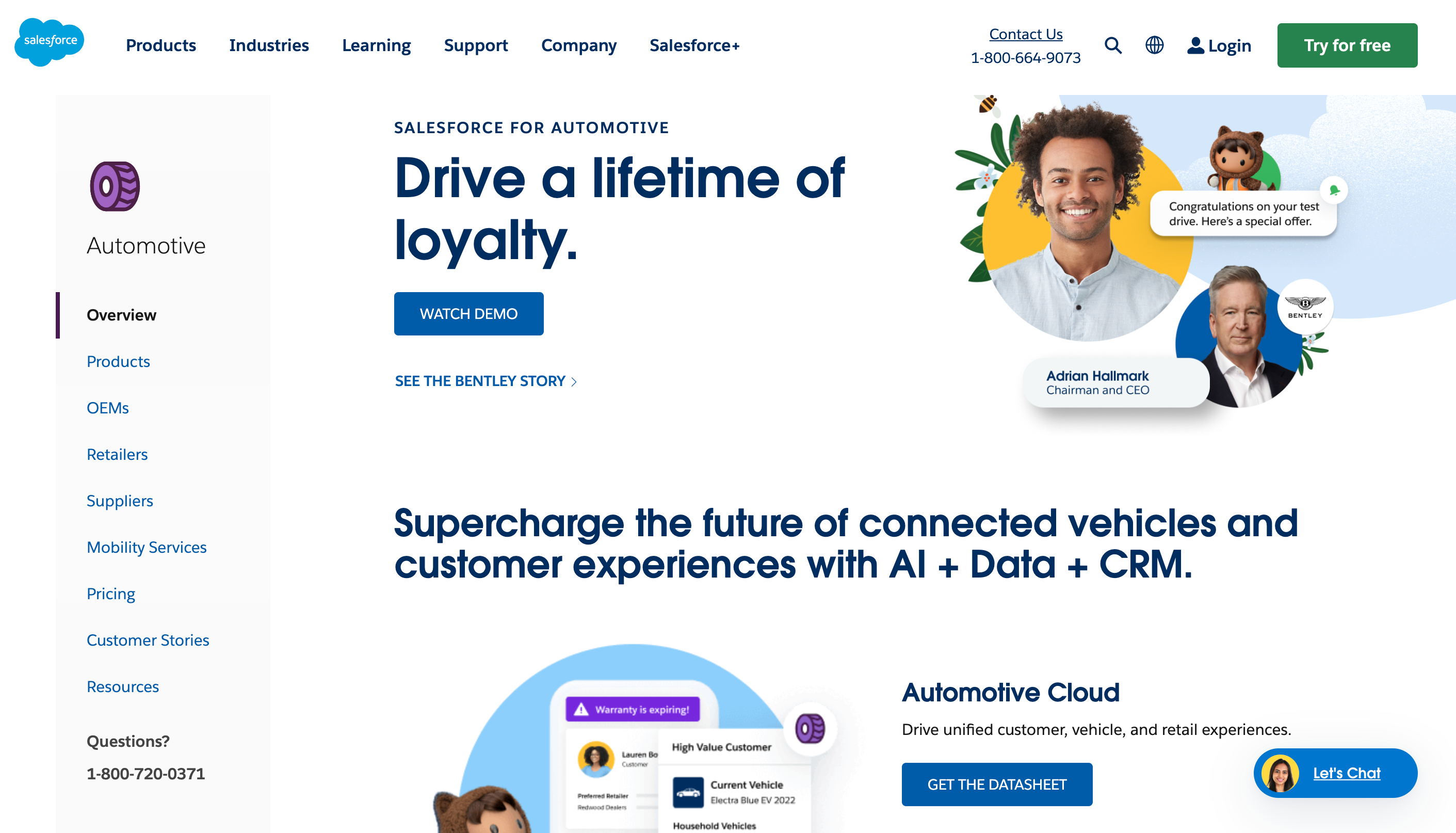
No matter how complex your software solution may be, you want to ensure that your landing pages simplify the concept. In fact, 41% of low-performing content includes complicated vocabulary.
5. Incorporate Intuitive Navigation
Design your landing page with user experience in mind. Ensure intuitive navigation that allows tech professionals to easily find the information they need. Use clear headings, subheadings, and visual cues to guide visitors through your content, making it effortless for them to explore your offerings and understand their relevance.
Videos help visitors digest new information faster as landing pages with videos have 34% higher conversion rates. Additionally, you want to keep your headings short and sweet since a majority of potential customers scan content instead of reading it in-depth:
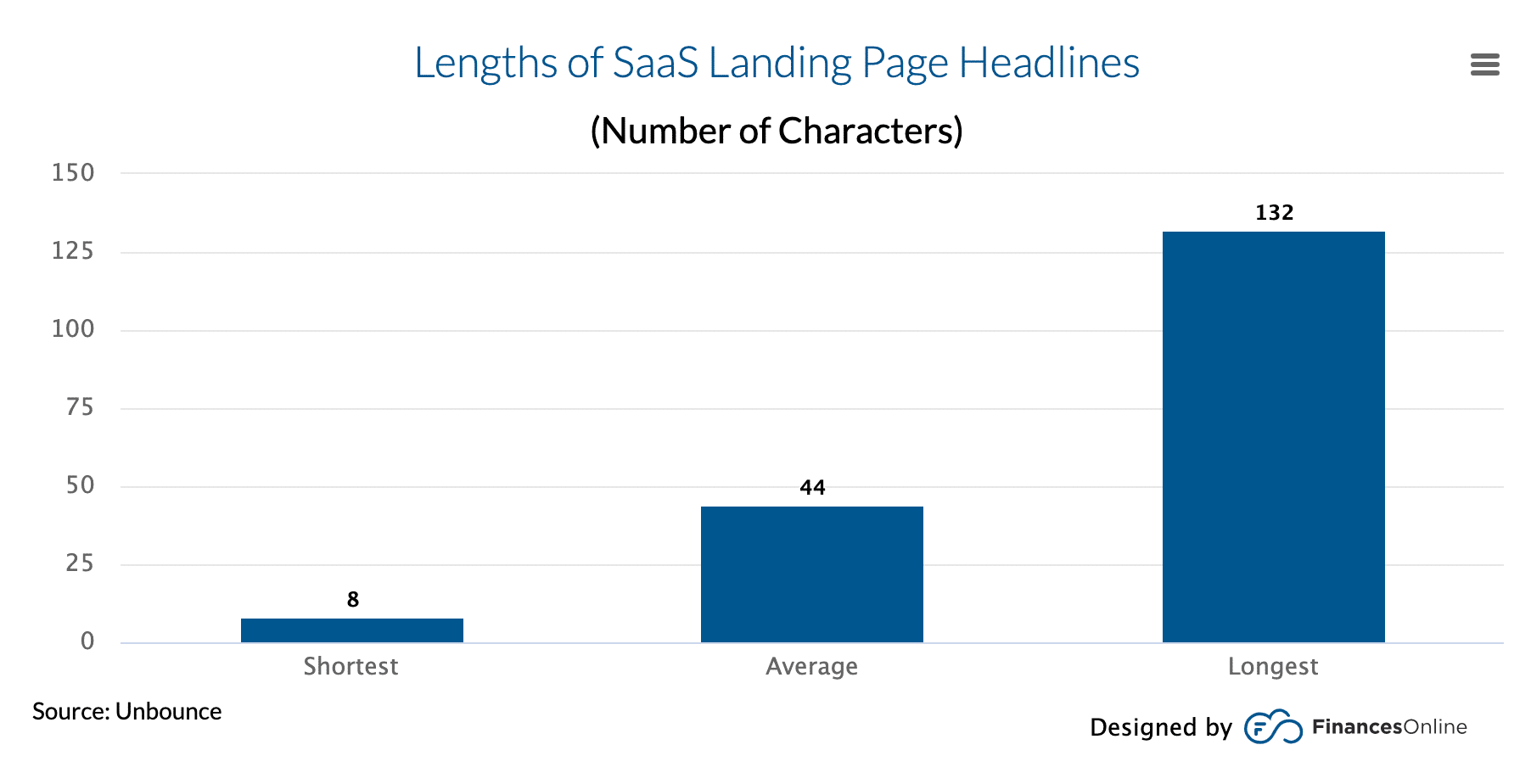
Source: FinancesOnline
6. Implement Responsive Design for Various Devices
In today’s multi-device landscape, ensure your landing page is responsive and optimized for various screen sizes. According to TechJury, about 86% of the most successful landing pages are optimized for mobile devices. Tech professionals may access your page from desktops, laptops, tablets, and smartphones. A seamless experience across devices enhances engagement and keeps visitors immersed in your content.
7. A/B Test to Refine Landing Page Performance
Harness the power of A/B testing to fine-tune your landing page’s effectiveness. Experiment with different headlines, images, CTAs, and layouts to identify what resonates best with your audience. According to Gitnux, 77% of companies are running A/B testing on their website, 60% on their landing pages, and 44% use split testing software. Continuously iterate based on the insights gained from A/B testing to optimize conversion rates.
8. Track & Analyze User Behavior
Implement robust analytics tools to track user behavior on your landing page. Analyze metrics such as bounce rates, click-through rates, and time spent on the page. This data provides valuable insights into visitor preferences and pain points, enabling you to make informed adjustments that enhance the overall user experience.
Hotjar is a great resource to use to visually see how visitors interact with your landing page content:
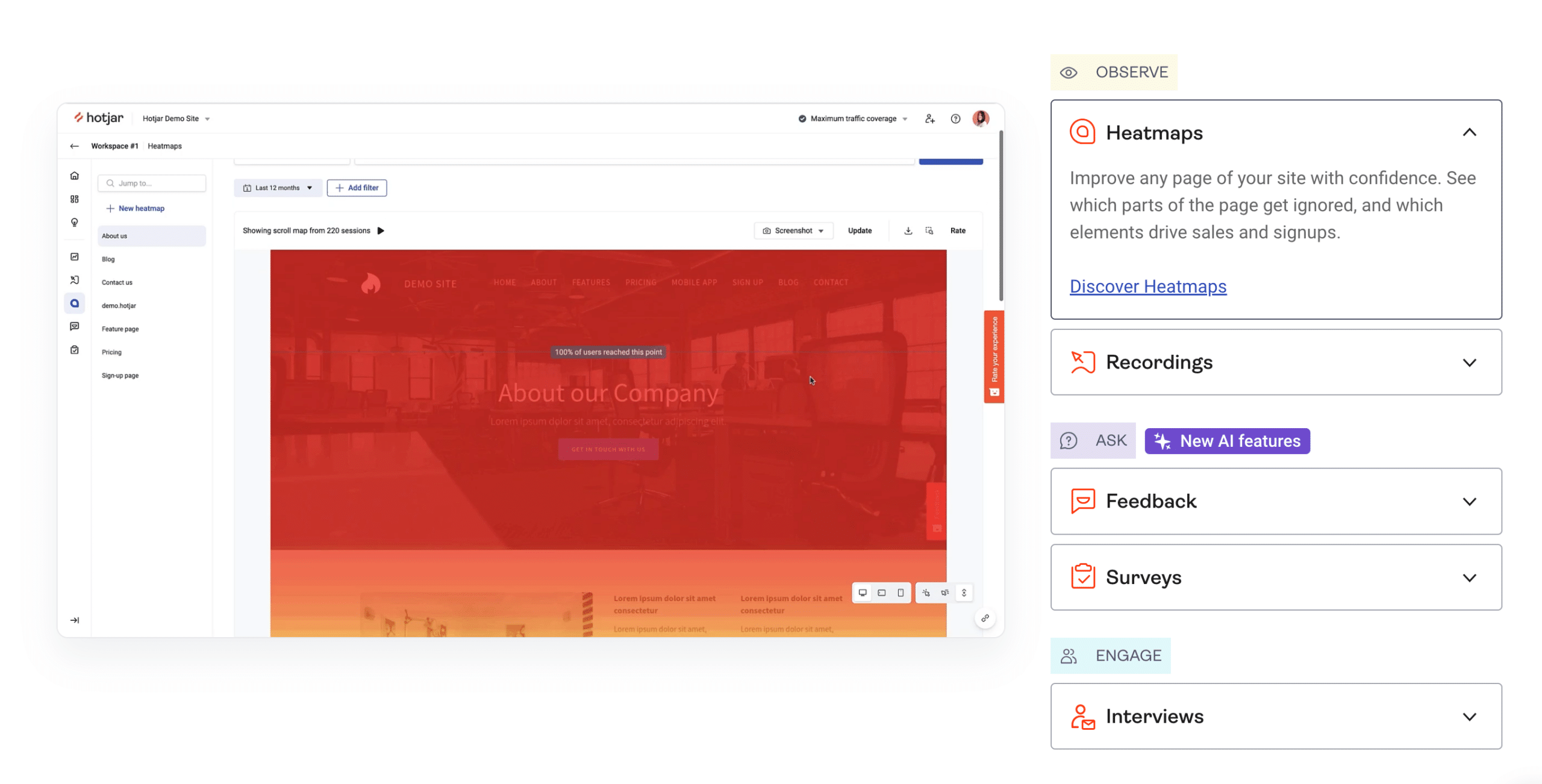
You need this valuable information to make data-driven decisions on the changes you should implement for your targeted landing pages.
Evolving SaaS Landing Page Strategies in Tech
As technology continues to evolve at a rapid pace, so do the strategies and tools available for crafting effective landing pages. Forward-thinking businesses are embracing innovative approaches that harness the power of emerging trends to create landing pages that not only captivate their target audience but also drive unprecedented engagement and conversions.
Keeping up with the evolving industry landscape allows you to make sure you’re maintaining a strong SEO performance for these landing pages as well. Ensure that you remain competitive with the content and topics you’re targeting.
SaaS Landing Page Key Takeaways
As technology continues to advance and industries evolve, the journey of crafting effective industry-specific landing pages is bound to evolve as well. By staying attuned to emerging trends and ever-changing customer needs, SaaS companies can continue to leverage these pages as dynamic tools that reshape the landscape of digital marketing in the tech sector.
If you need help driving conversions with your business’s SaaS landing pages, Insivia could be the solution for you. We are experts in creating content for targeted landing pages to attract the most beneficial visitors for your product/service.
